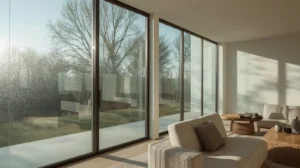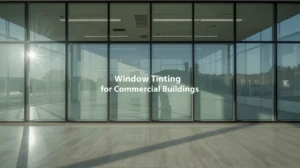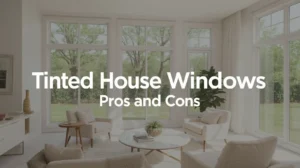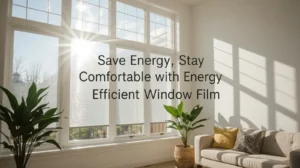Many homeowners wonder, do tinted windows help with heat? The answer is yes. Window tint can dramatically reduce indoor heat by blocking infrared and ultraviolet rays that make rooms hot and uncomfortable. Quality home window films act like a shield, keeping sunlight out while letting soft natural light in. As a result, homes stay cooler, energy use drops, and interior furnishings last longer. When installed correctly, tinting gives year-round comfort, making it one of the simplest ways to improve your living space’s efficiency and feel.
Understanding the Problem: Why Heat Build-Up Matters
When sunlight hits glass, it doesn’t just brighten the room it traps warmth inside. Homes with large windows often experience uneven temperatures. Rooms that face the sun heat up faster, while shaded areas remain cooler. This imbalance causes your air-conditioning system to work overtime, leading to higher energy bills and faster wear on equipment.
Over time, that extra heat takes a toll on your home’s comfort and appearance. Wood floors can dry out or fade, fabrics lose color, and artwork becomes dull. Curtains and blinds only block visible light, not the infrared rays that carry most of the heat. The challenge isn’t simply blocking light; it’s controlling how sunlight interacts with glass. Homeowners need a solution that works continuously without changing the way their home looks or feels and that’s exactly what window tinting does.
The Science Behind Window Tinting and Heat Control
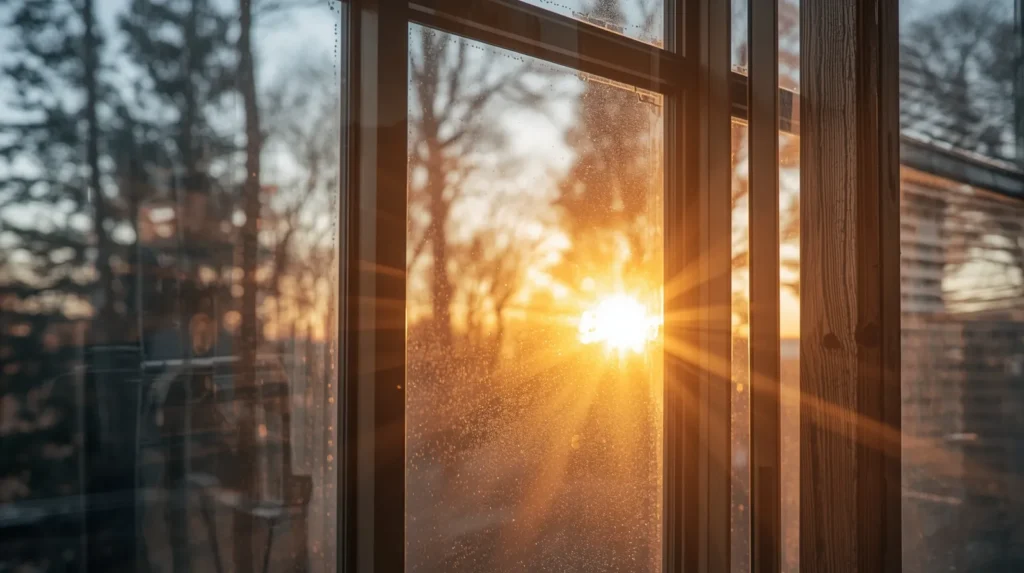
Window tinting uses science to manage sunlight before it becomes indoor heat. Each film layer serves a purpose. The outer coating resists scratches, while the inner layers control light transmission and heat absorption. The key player is the infrared-blocking layer, which stops invisible wavelengths responsible for temperature rise.
When sunlight hits untreated glass, almost all the infrared energy passes through, heating air and surfaces. A tinted window film interrupts that process. Depending on film type, it can block up to 80 percent of infrared energy and 99 percent of UV light. The result is a cooler, more stable indoor temperature without turning your windows dark or reflective.
This balance is what makes tinting so appealing. It lets you enjoy natural light while shielding your home from the harsh side of the sun. The best part is that it works every single day without you needing to adjust blinds or change habits.
Do Tinted Windows Help with Heat? The Straight Answer
So, do tinted windows help with heat? Absolutely. A professionally installed tint transforms how your home handles sunlight. Even thin, nearly invisible films can cut down noticeable warmth inside. Homes that once felt unbearable in the afternoon suddenly become livable again.
In addition to comfort, tinting reduces reliance on air-conditioning. You don’t need to lower the thermostat as often, which saves both energy and money. In some cases, homeowners notice up to 30 percent less energy use in peak summer months. Those savings build year after year, making tinting a smart investment rather than just a visual upgrade.
Home window tinting also contributes to environmental efficiency. By lowering energy demand, your household carbon footprint decreases. You get a greener home that feels better to live in all by managing sunlight more intelligently.
How Window Tint Reduces Heat: Breaking Down the Process
To understand tint’s cooling effect, imagine it as a filter that separates useful light from harmful heat. The process happens in three simple ways:
- Reflection: Specialized coatings bounce a portion of the sun’s heat energy away before it enters.
- Absorption: Some of that energy gets trapped within the film itself, preventing it from reaching interior surfaces.
- Dispersion: Any remaining light spreads evenly across the glass, minimizing glare and hot spots.
These actions together are called solar control. The right tint film acts almost like sunglasses for your house keeping vision clear while limiting energy that causes discomfort.
In addition, heat reduction improves more than comfort. It protects your windows themselves. Constant heat expansion and contraction can cause stress cracks over time. By reducing direct energy exposure, tinting can extend the life of your glass and frames.
Does Tint Block Heat or Just Light? Key Differences Explained
A common misunderstanding is that the darker the window, the better the cooling. While dark films do reduce glare, that doesn’t automatically mean they stop heat. The real factor is infrared rejection.
High-end residential films are designed to block up to 80–90 percent of infrared energy. They do this without making the window look tinted at all. You can have a bright, naturally lit home and still enjoy a much cooler interior.
So when choosing tint, the focus shouldn’t be on shade level it should be on performance. Look for products labeled with high solar energy rejection rates. These indicate the film has been tested to prevent heat buildup rather than simply dim the light.
Comparing Regular Tint vs. Ceramic Tint for Heat Reduction
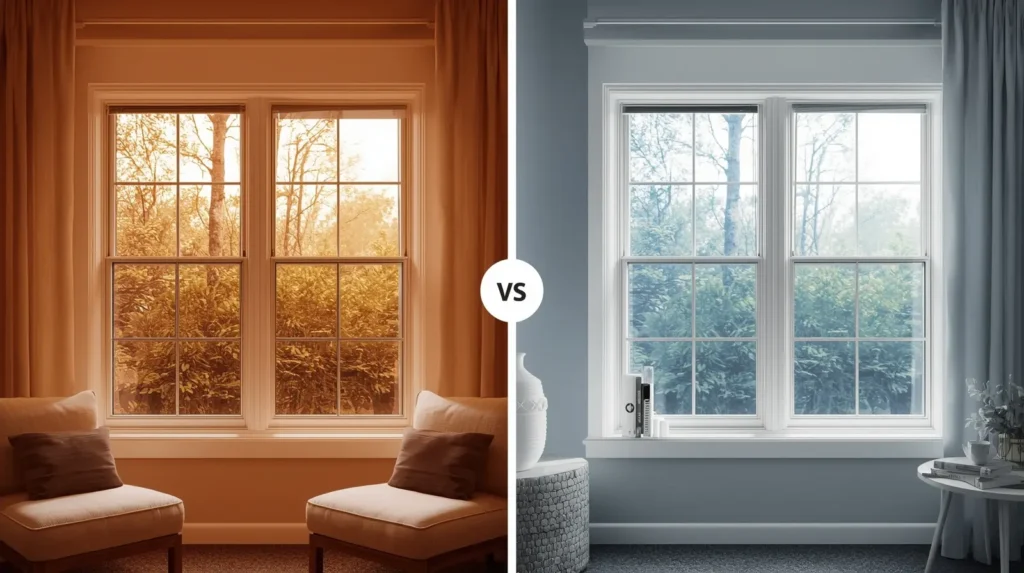
Let’s compare two popular choices: standard tint and ceramic tint.
Standard dyed films are affordable and effective at reducing glare, but they offer limited infrared blocking. They can fade faster in intense sunlight and may not deliver major heat reduction in large windows.
Ceramic window films, on the other hand, use advanced nanotechnology to target and block infrared radiation while keeping a neutral, natural appearance. They don’t contain metals, so they won’t interfere with Wi-Fi or cellular signals. These films maintain clarity even in direct sunlight and resist fading for decades.
That’s why experts call ceramic films the best window tint for heat reduction in homes. They offer maximum comfort, durability, and clarity making them perfect for sunny areas like living rooms, kitchens, and sunrooms. The cost may be slightly higher upfront, but the comfort and longevity more than make up for it.
Measuring Real Results: How Much Cooler Does Tint Make Your Home
The difference after tinting is not just something you feel it’s something you can measure. Studies from energy efficiency organizations have shown that professionally tinted windows can reduce heat gain by 30 to 60 percent, depending on glass type and film grade.
For example, a west-facing room that used to reach 90°F in summer might stay around 72–75°F after tinting. You’ll also notice your air conditioner cycling less frequently. Energy-efficient tinting can even qualify homeowners for rebates or energy credits in some states.
Besides temperature improvement, comfort extends to every surface. Carpets, wooden floors, and artwork are no longer exposed to intense sunlight. Less UV exposure means fewer repairs, less discoloration, and longer life for your interiors. Over time, these savings quietly add up.
Common Myths About Window Tint and Heat Reduction

Let’s clear up some confusion about home tinting.
Myth 1: Tint makes rooms dark and gloomy.
Modern films are designed to balance visibility and comfort. Many are nearly invisible yet still deliver strong heat reduction.
Myth 2: Tinting windows causes glass damage.
On the contrary, tinting adds a layer of protection that reduces stress from temperature changes and prevents cracking.
Myth 3: All films perform the same.
Performance depends on material quality. Cheap films may peel or bubble, while premium ones like those installed by Tint Solutions Tennessee maintain their clarity for decades.
Myth 4: Tinting is only useful in tropical climates.
Even in cooler regions, window tint stabilizes indoor temperature and reduces glare from snow and reflections. It’s a year-round solution for comfort and protection.
By replacing myths with facts, homeowners can make smarter, longer-lasting choices for their properties.
Choosing the Best Window Tint for Heat Reduction and Comfort
Every home has different needs. A large glass patio door faces different challenges than a small bedroom window. When choosing tint, consider these factors:
- Window orientation: South- and west-facing windows usually need higher heat rejection films.
- Natural light preference: Decide how bright you want each room to remain.
- Exterior appearance: Some homeowners prefer a subtle neutral look, while others choose light gray or bronze tones for contrast.
- Budget and warranty: Quality films often come with lifetime warranties and guaranteed UV protection.
The best option is a ceramic or spectrally selective film clear enough to keep rooms bright but powerful enough to block heat. A quick professional consultation helps you compare samples under natural light so you can visualize the results before installation.
Why Professional Installation Matters Especially in Nashville
While DIY kits exist, home window tinting requires accuracy and clean conditions to perform well. Any dust or misalignment during application can create air bubbles that reduce visibility and shorten lifespan. Professional installers prepare the glass with precision cleaning, use specialized tools to eliminate imperfections, and apply film evenly across every edge.
They also understand how glass type affects performance. Double-pane, tempered, and low-E windows all react differently to heat and film absorption. Using the wrong film on certain glass can cause stress or seal failure. Professionals like Tint Solutions Tennessee ensure that each surface receives the correct type for both safety and performance.
In Nashville, where sunlight and humidity fluctuate throughout the year, expert installation prevents peeling and bubbling that often occur in hot climates. The difference between DIY and professional work becomes clear after just one summer you get cooler rooms, better appearance, and years of maintenance-free performance.
Stay Cool and Protected: Schedule Your Free Consultation Today
You don’t have to tolerate hot, uncomfortable rooms or skyrocketing cooling bills. With modern home window tinting, comfort, energy savings, and style come together in one solution. The films are elegant, durable, and nearly invisible, yet they work around the clock to block heat and harmful rays.
Tint Solutions Tennessee helps homeowners transform their living spaces into cool, energy-efficient sanctuaries. Their expert team offers professional consultation, precision installation, and premium-grade films made for lasting performance.
If you’re ready to enjoy cooler temperatures, brighter comfort, and lower energy costs, reach out today for a free consultation. You’ll see how easy it is to bring modern heat protection and timeless comfort into your home all without losing the sunlight you love.

